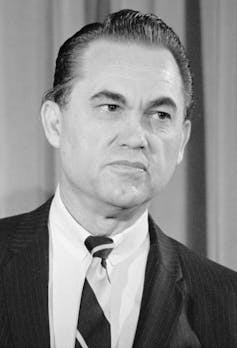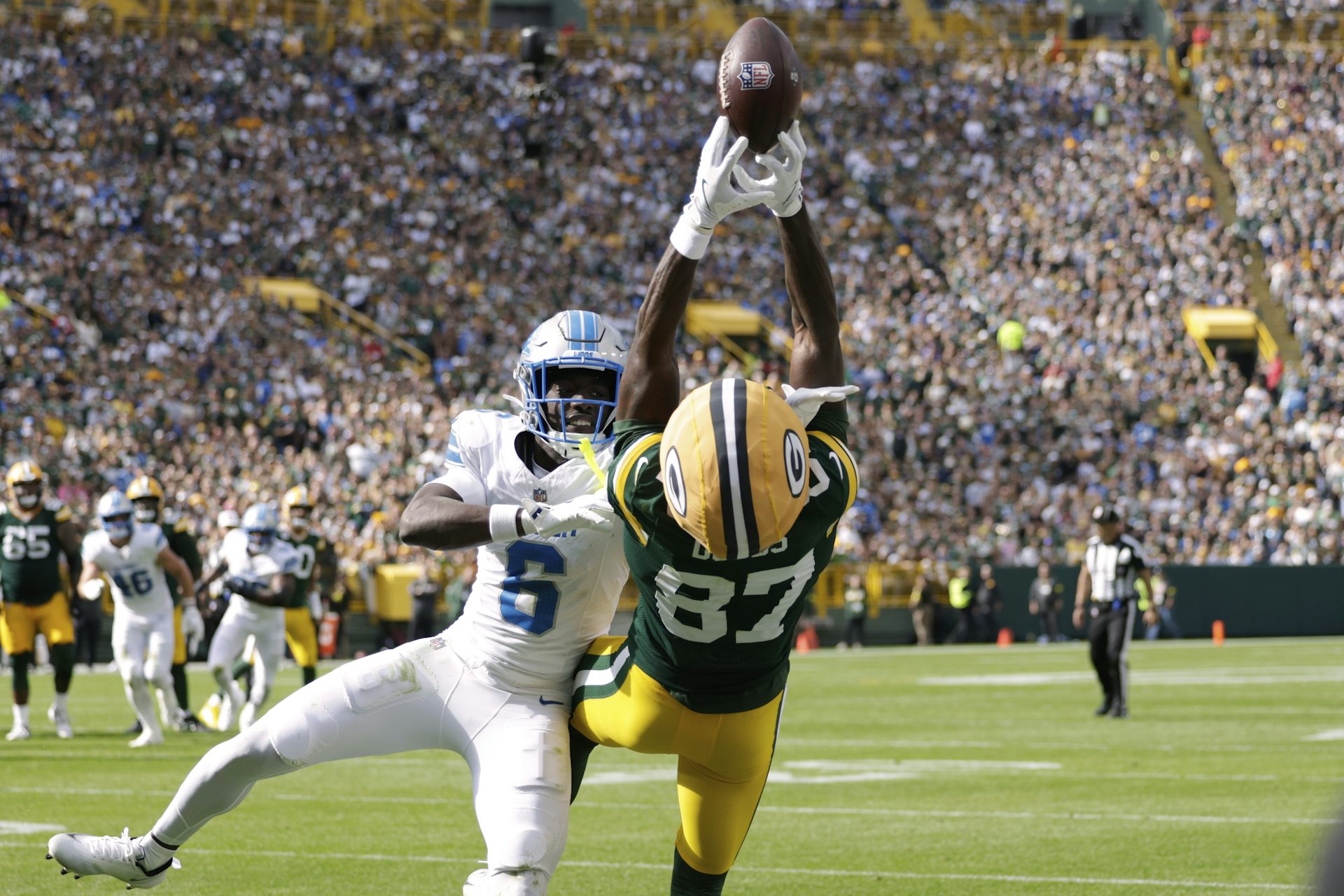Defying Trump, Alabama elects Roy Moore – and embraces the same old politics of rage
A scholar from Alabama’s Auburn University at Montgomery explains how Republicans use the politics of rage to dominate the state, even while squabbling amongst themselves.
The Roy Moore and Luther Strange Republican primary runoff in Alabama wasn’t quiet, staid or dignified.
Set against the backdrop of Strange’s appointment by the former – and now disgraced – Gov. Robert Bentley, Strange and Moore jockeyed to position themselves as President Donald Trump’s most reliable Senate surrogate. Only Strange had Trump’s endorsement. And yet, Alabama voters, who overwhelmingly support the president, backed the insurgent and at times inflammatory Moore by a nearly 10 point margin.
Alabama politics are often pigeonholed as reliably conservative. True, the Republican Party dominates the state, but that shouldn’t suggest Alabama doesn’t have competitive elections – it’s just that they only rarely occur between Democrats and Republicans. Alabama is what some scholars of southern politics like V. O. Key might term “bi-factional.” It is a single-party state, but within that party, factions vie for control.
Some were surprised by how competitive this special election was. Not me. I’ve lived in Alabama nearly my entire life, first as a student and now as a professor of political science at Auburn University-Montgomery. For those of us who have taken a long glance at Alabama politics, this special election was not only unsurprising – it was downright predictable.
Alabama politics then and now
To understand Alabama politics today, you need to go back to 1986.

George C. Wallace, the longtime Democratic governor of the state, had decided the future of his political career. To a packed and at times emotional audience, he revealed that he would never again seek elected office, ending his nearly quarter-century reign in Alabama. His decision left a political chasm in a state that for many years had only ever known “Wallaceism” – a political ideology unto itself, centered upon its namesake’s cult of personality.
In this void, two contenders emerged who would come to represent the future of Alabama politics.
Bill Baxley, Wallace’s lieutenant governor and former state attorney general who successfully prosecuted a Ku Klux Klan member for bombing the Sixteenth Street Baptist Church, received the Democratic nod.
Guy Hunt, for many years a lonely Republican in a state dominated by Democrats, became the Republican nominee. Here was a man who had been crushed in a similar gubernatorial bid just eight years earlier. As the 1986 election got underway, many assumed Hunt would repeat his previous performance. But unlike 1978, Wallaceism was on the decline, and traditional factions were reemerging.
Historically, Alabama politics have pitted moneyed industrial and agricultural interests against poor grassroots populism. Wallace’s career was noteworthy in that he managed to harness nearly every element of populism at one point or another, vacillating between racial moderation and white supremacy, and all the way back again before he was done.
In his early career, Wallace adopted the populism of his one-time mentor, Gov. “Big” Jim Folsom, who campaigned for the everyman on roads, schools and jobs.
But following the U.S. Supreme Court’s 1954 Brown v. Board of Education ruling, this brand of populism became untenable in Alabama. Whites of all political stripes demanded “massive resistance” from their politicians and offered their votes to whichever candidate gave the staunchest support for segregation. Wallace was burned in the 1958 gubernatorial election when John Patterson defeated his more moderate, Folsom-style campaign. Wallace is alleged to have remarked after his loss to never again get “out-niggered” by another segregationist. He kept that promise. From 1962 with his first election as governor, Wallaceism dominated state politics with its emphasis on what historian Dan Carter has termed “the politics of rage,” which focused almost religiously upon whites’ racial resentments, fears and anxieties.
Wallace transcended parties and factions – and became what political scientist V. O. Key called a “lone-wolf” politician. Although his personality attracted a powerful group of followers for a time, the faithful quickly drifted away once he left the political stage. After Wallace, Alabama Democrats predominantly represented the poor, the teachers’ union, plaintiffs’ lawyers and civil rights organizations.
Meanwhile, by the 1980s, a nascent Republican Party had emerged in the state. Alabama Republicans were increasingly young, educated, financially better off and white. Many simply did not remember the events that had led their parents to fall in love with Wallace or the Democrats. Culturally, they were more attuned to their evangelical grassroots and Reaganism. Republicans in this period were bankrolled by factions that represented business and land – longtime stakeholders in Alabama politics.
Republicans and Democrats engaged in a roughly 25-year battle for control of the state.
In 1986, Republican Hunt defeated Democrat and former state attorney general Baxley in a major upset. By 1997, Republicans controlled the state delegation to the U.S. Senate; in 2001, the state Supreme Court; in 2003, the governor’s mansion; and in 2011, Republicans captured the state House and Senate for the first time since Reconstruction. They then consolidated their gains with punishing partisan gerrymanders that further eroded Democratic shares of the House and Senate.
Alabama is once again a single-party state, but the factions that comprise that party are beginning to come apart.
The dog that caught the car
Paradoxically, the worst thing that might have befallen Alabama Republicans was their total victory over the Democratic Party.
Today, it’s almost hackneyed to antagonize state Democrats for their support of unions or abortion access. Democrats are no threat to Republican hegemony. Rather, the total success Republicans have achieved at the Democrats’ expense has exposed the longstanding rifts that separate Alabama’s political factions but were only held together so long as Democrats were viable sources of opposition. Without them, bi-factionalism has returned, pitting those with money against those without it; those with college degrees against those with none; those who are being held hostage by the state’s struggling education and public health systems against those who have thrived. The grassroots feel used.
Like Wallace, Roy Moore is a party unto himself. He channels the grassroots’ resentments and anxieties and makes them feel proud of their identities, predominantly as white Christians.
Alabamians have tended to fall prey to the demagogue when they felt most anxious, resentful and angry. The election of Barack Obama, America’s first black president, helped catalyze these feelings among the population’s white majority, and Trump’s election was nothing more than gasoline to the fire with its overt appeals to racism and Christian identity.
If the Alabama Democrats are clever – and I don’t see any evidence to suggest this is the case – they will position themselves either to peel away disaffected “Never Moore” types of Republicans, or they will run counterpopulism candidates who adopt socially conservative and economically liberal policies.
I don’t expect Moore’s Democratic challenger in the general election, Doug Jones, to run this kind of campaign. I also have a dim outlook for Democrats’ efforts to win legislative seats in next year’s midterms. History leads me to believe that Wallaceism – the style that initially led him to statewide success – will triumph in Alabama so long as the politics of rage are alive and well. The election of Roy Moore seems to suggest it is.
David Hughes does not work for, consult, own shares in or receive funding from any company or organization that would benefit from this article, and has disclosed no relevant affiliations beyond the academic appointment above.
Read These Next
As US hunger rises, Trump administration’s ‘efficiency’ goals cause massive food waste
Despite the administration’s claim of streamlining the government to make its operations more efficient,…
A year on, the Israeli-Lebanese ceasefire looks increasingly fragile − could a return to cyclical vi
Since the start of the truce on Nov. 27, 2024, there have been thousands of Israeli violations inside…
George Plimpton’s 1966 nonfiction classic ‘Paper Lion’ revealed the bruising truths of Detroit Lions
George Plimpton, then a 36-year-old literary editor, endured the brutal realities of a professional…





